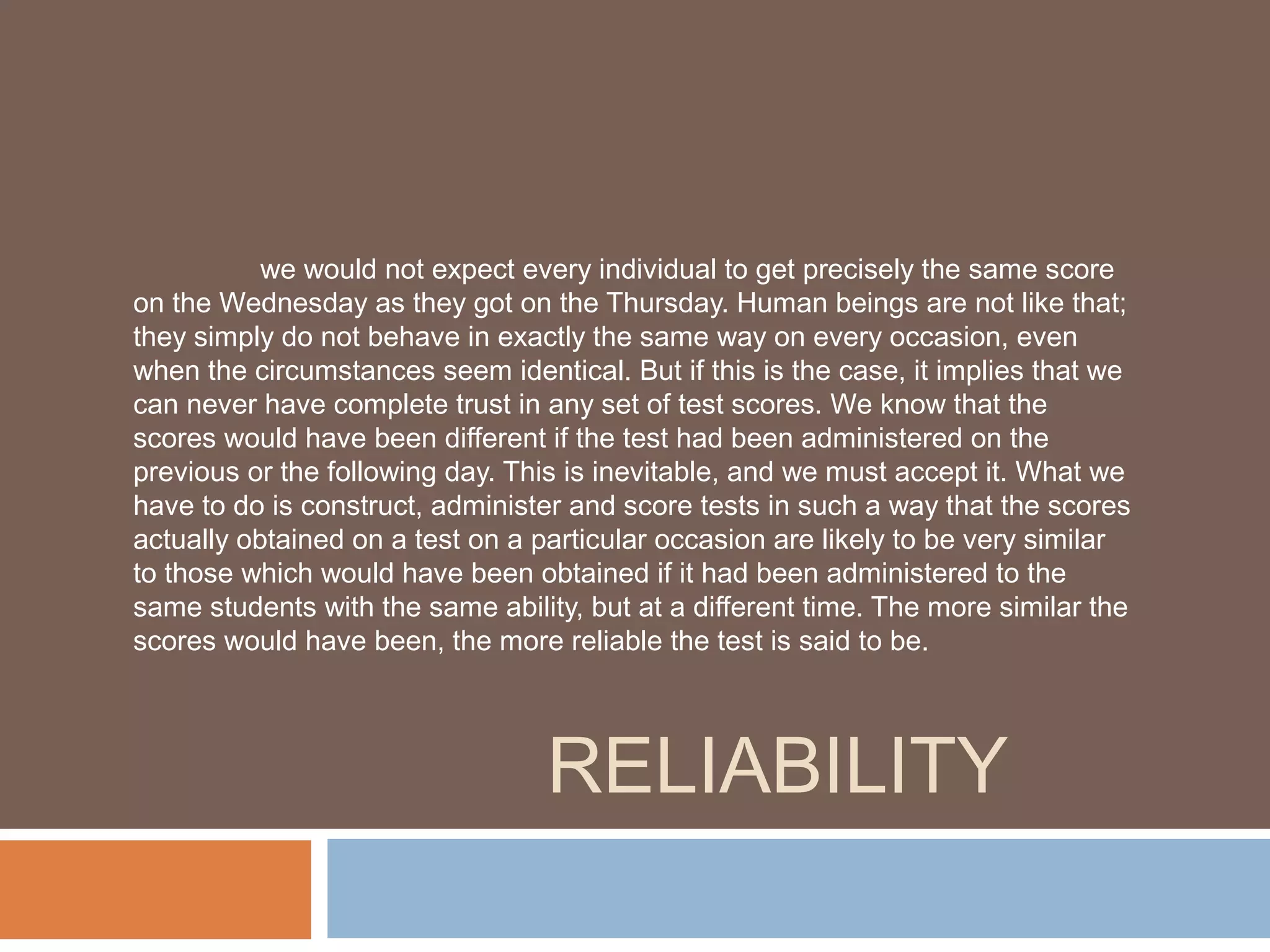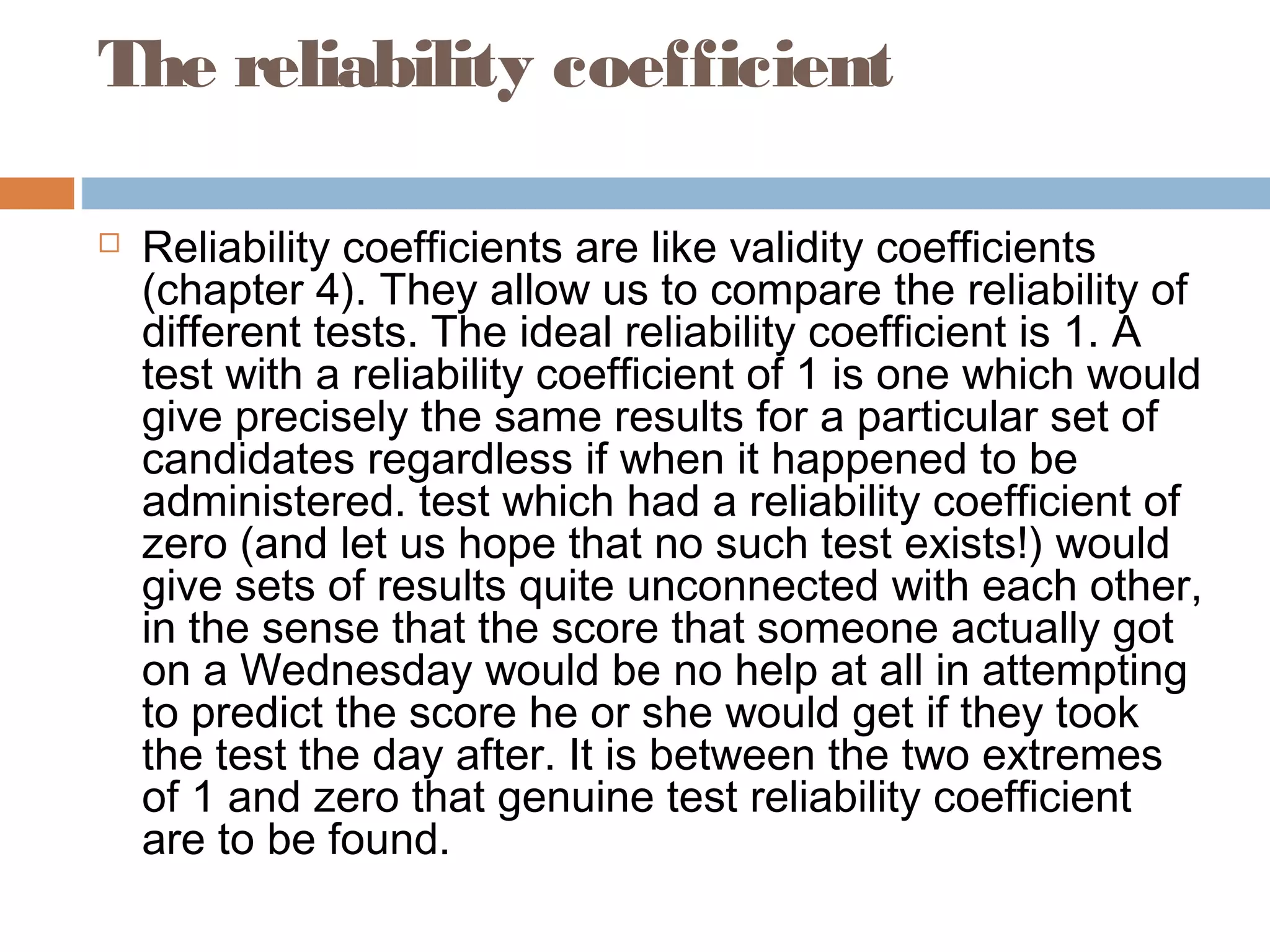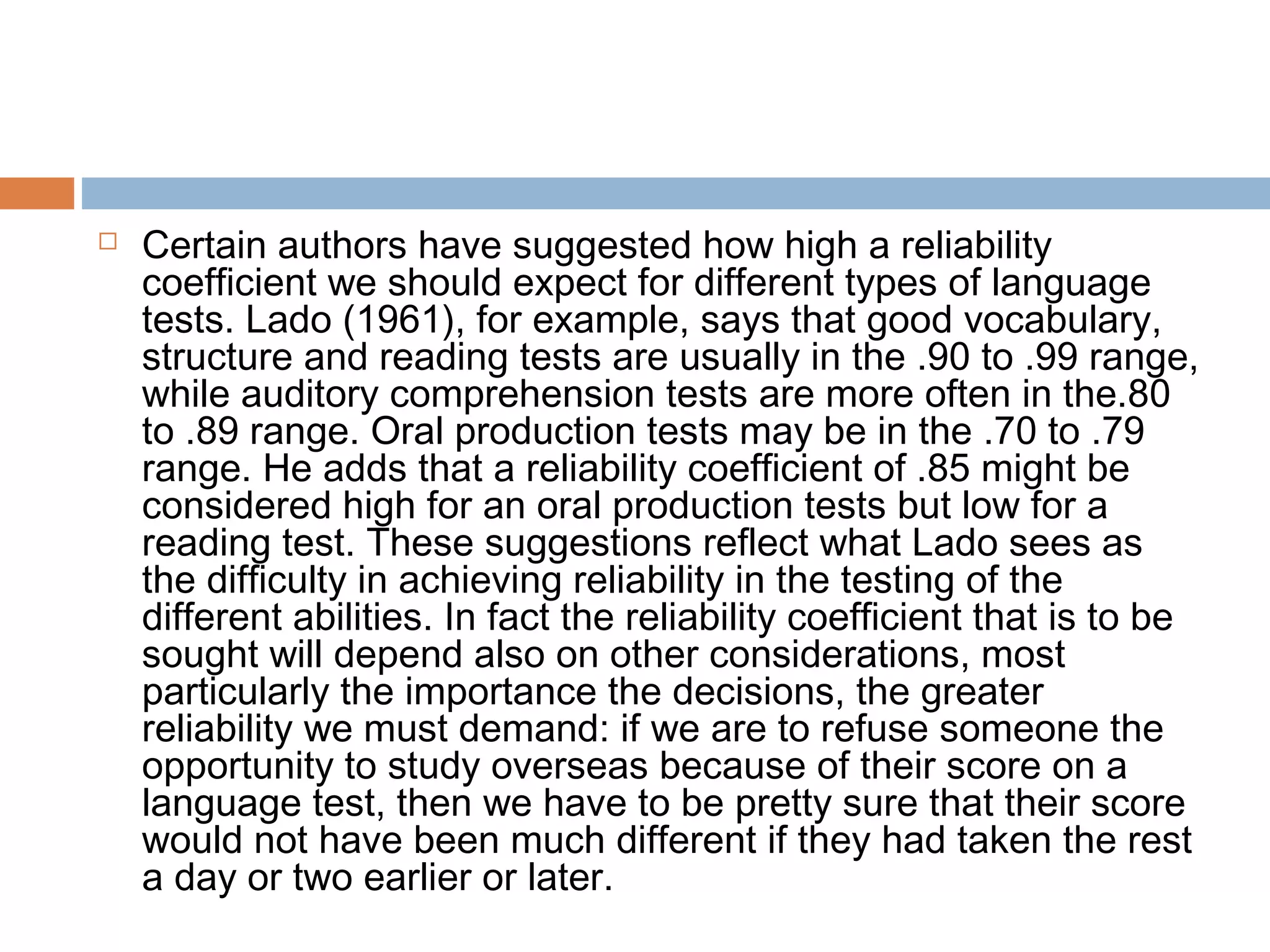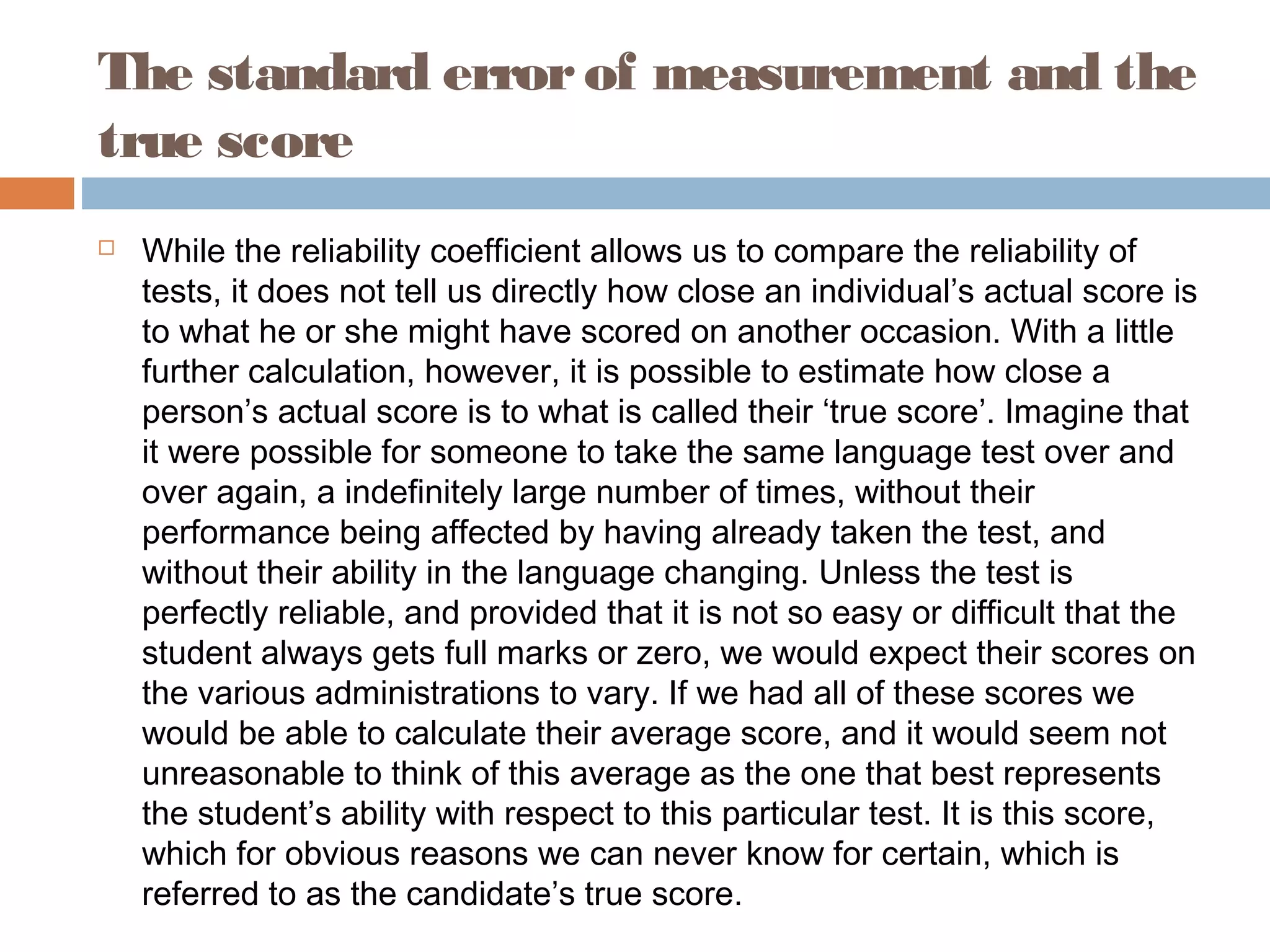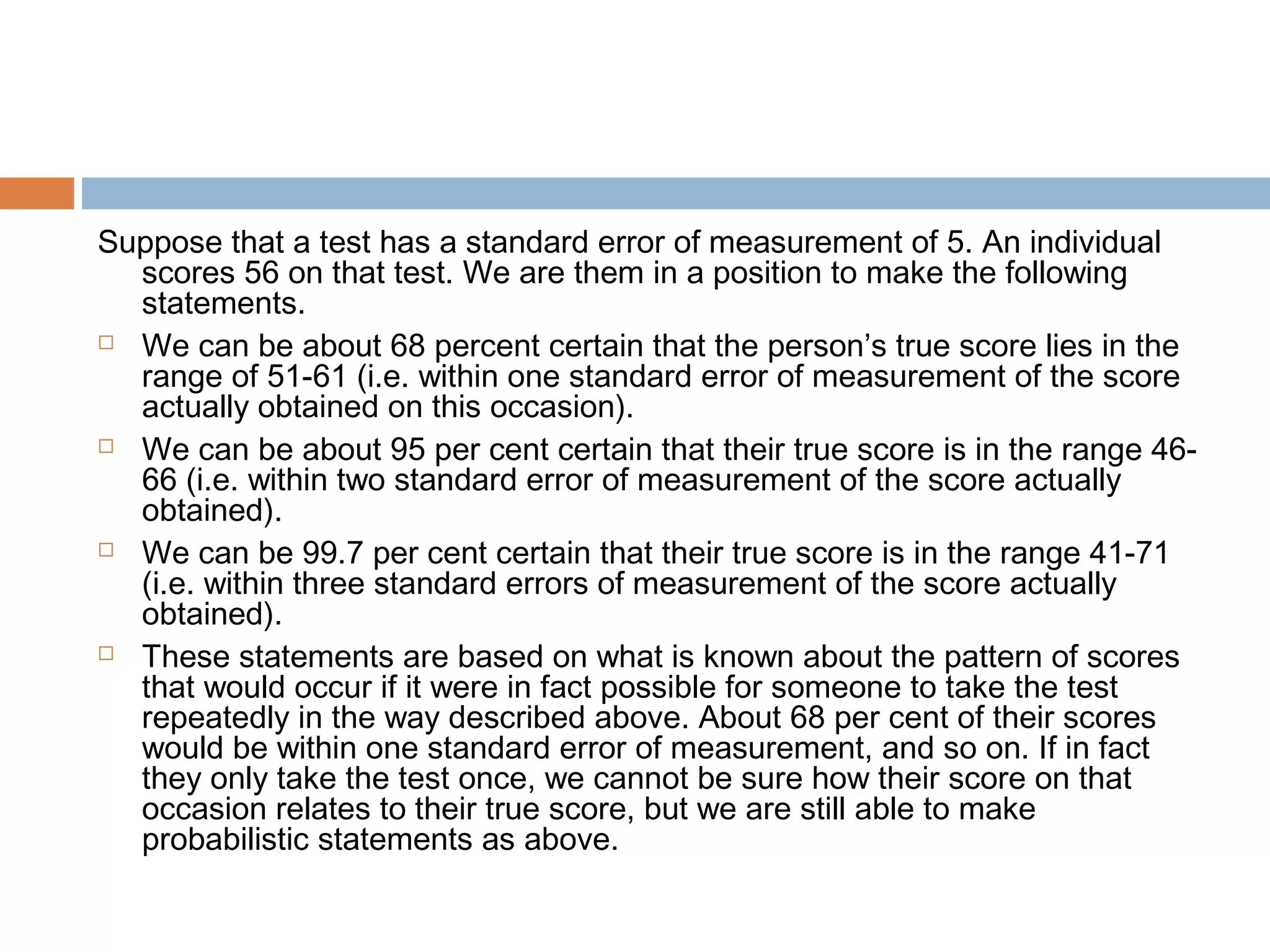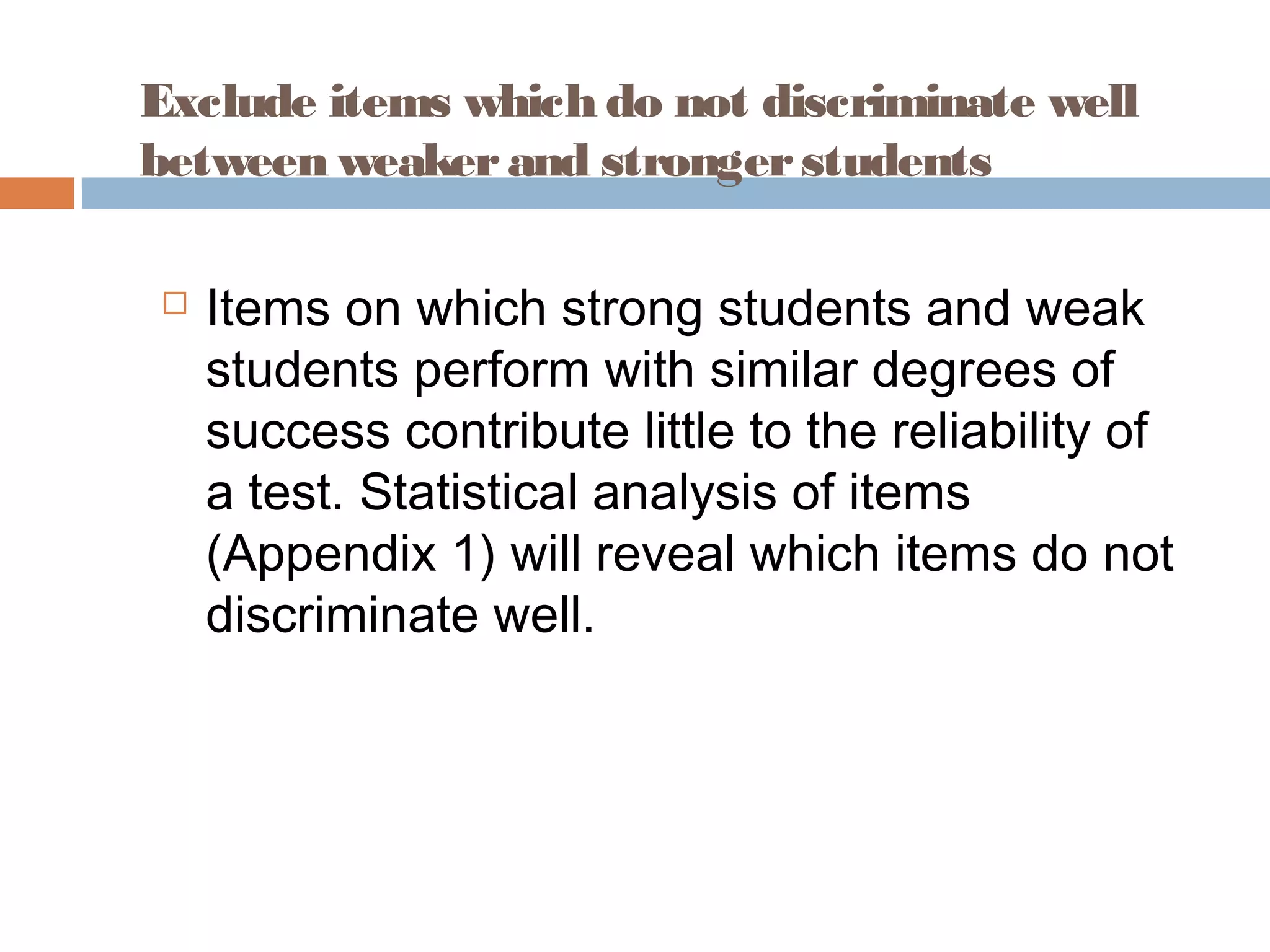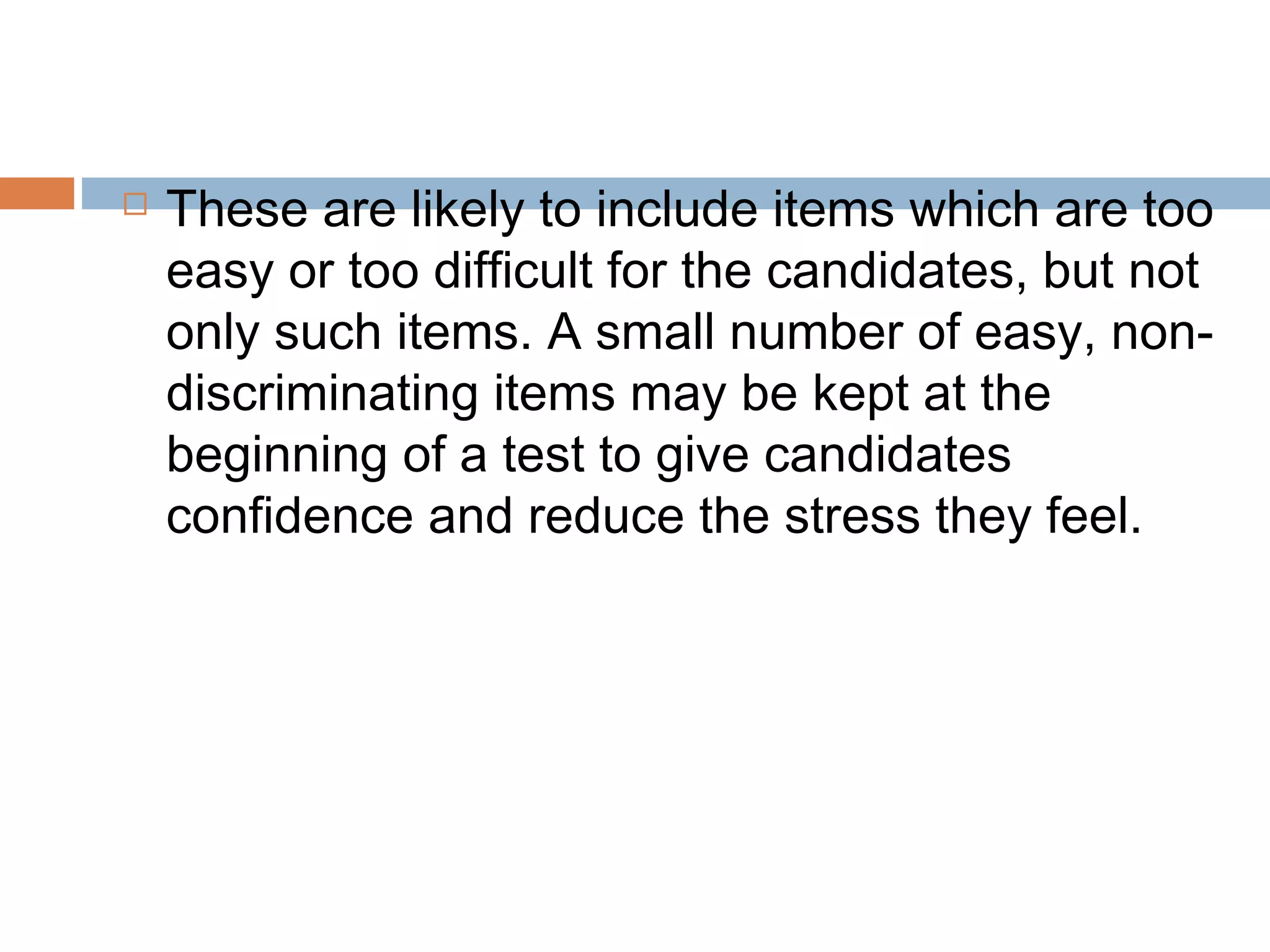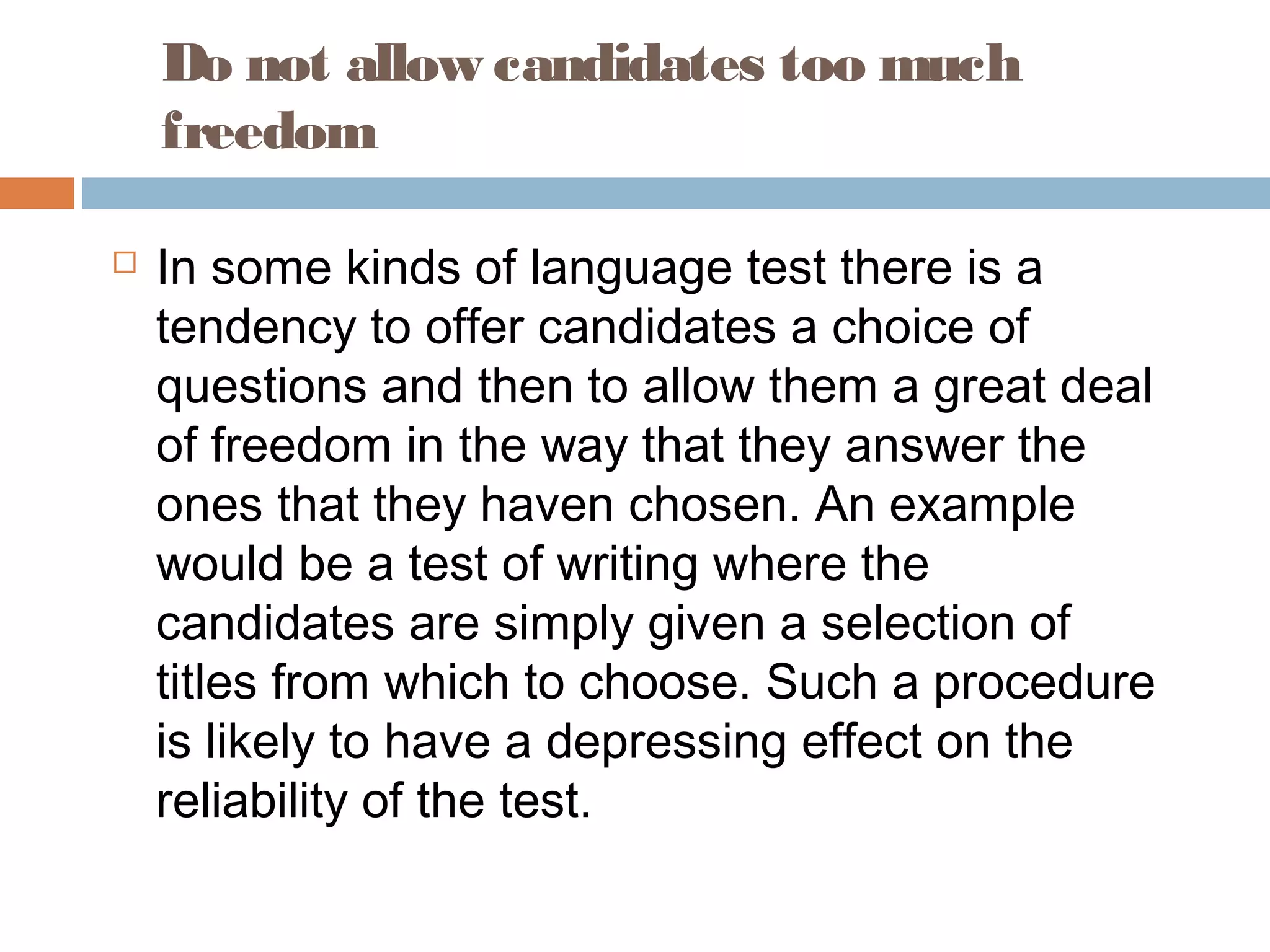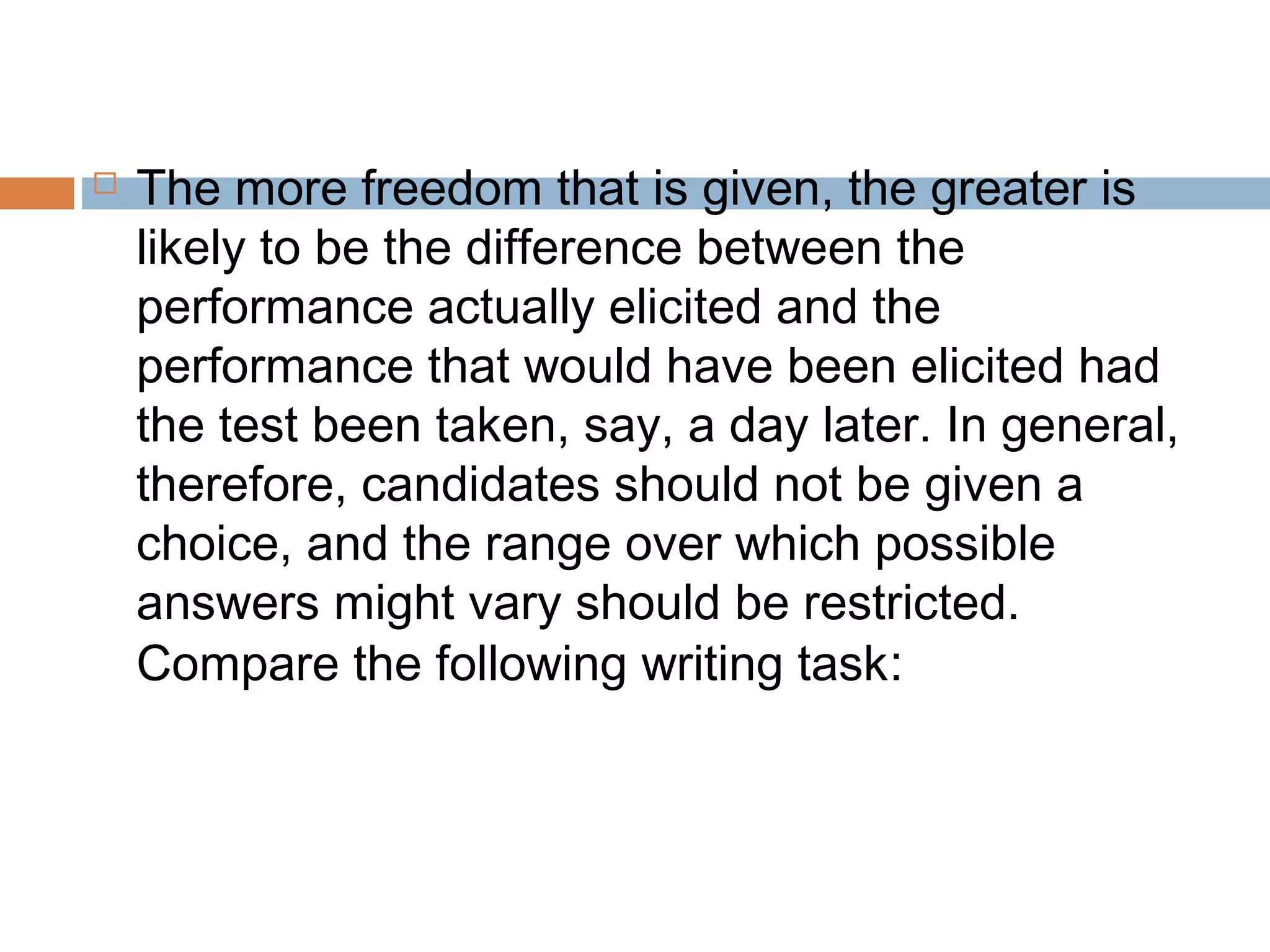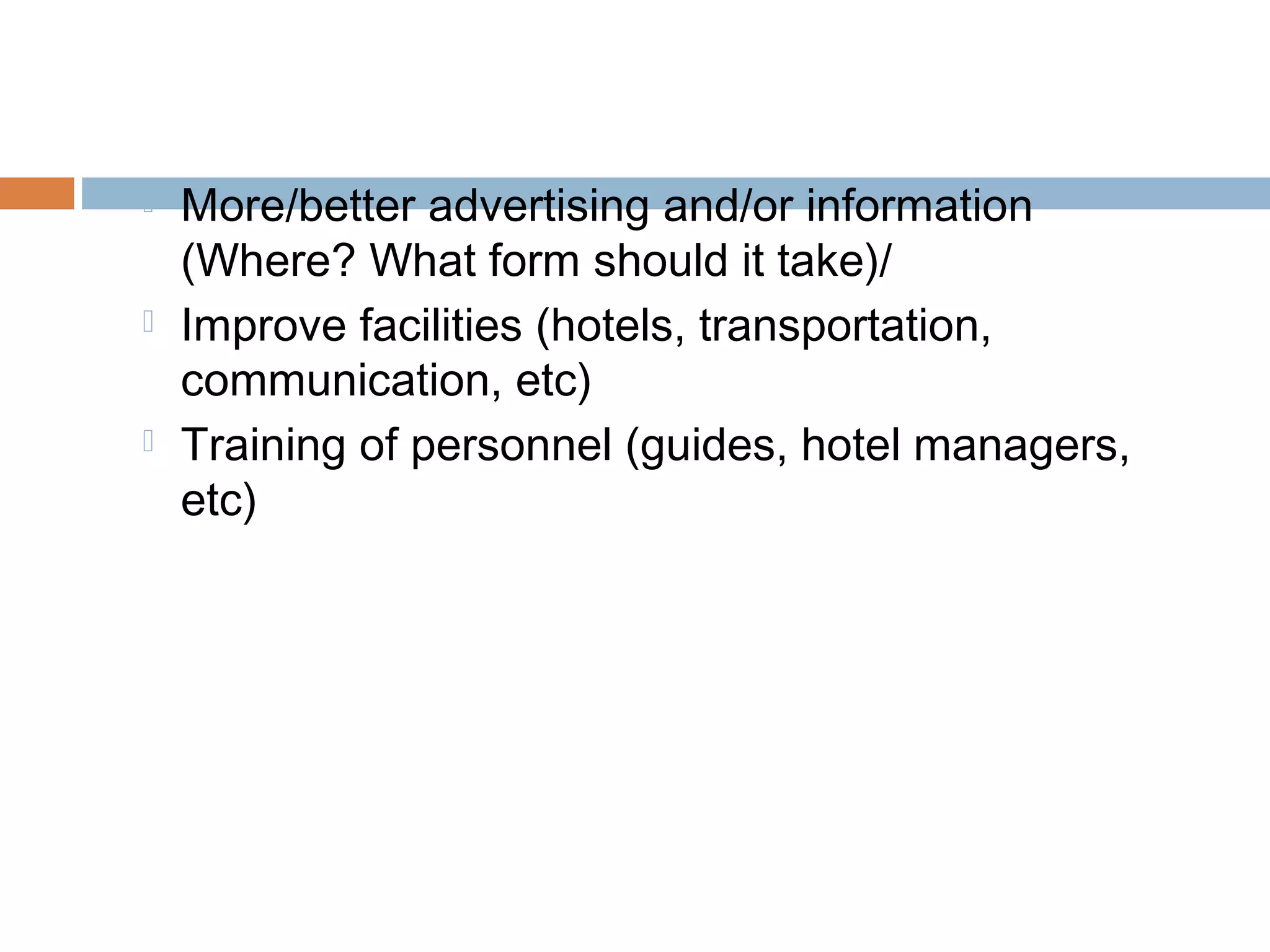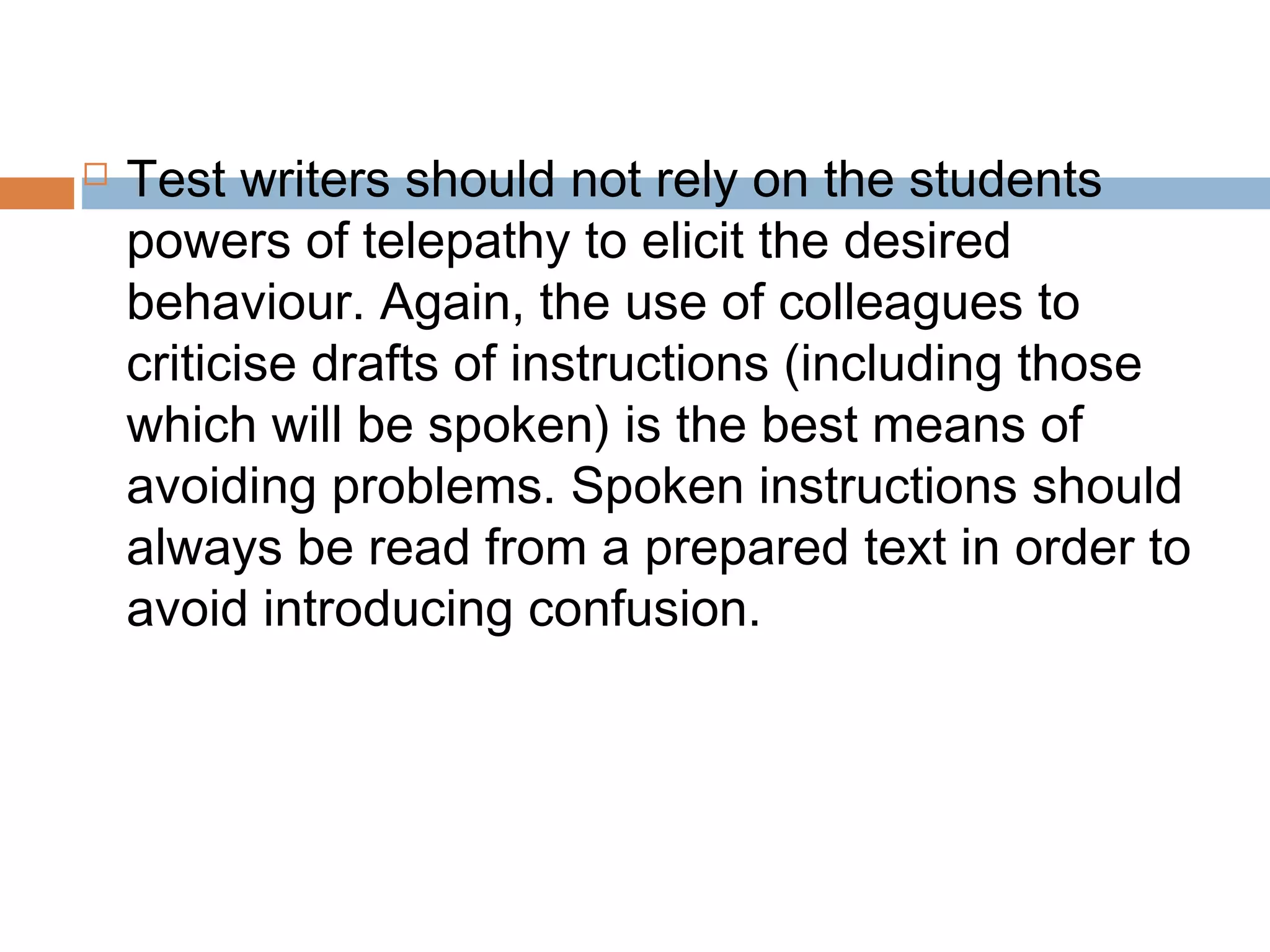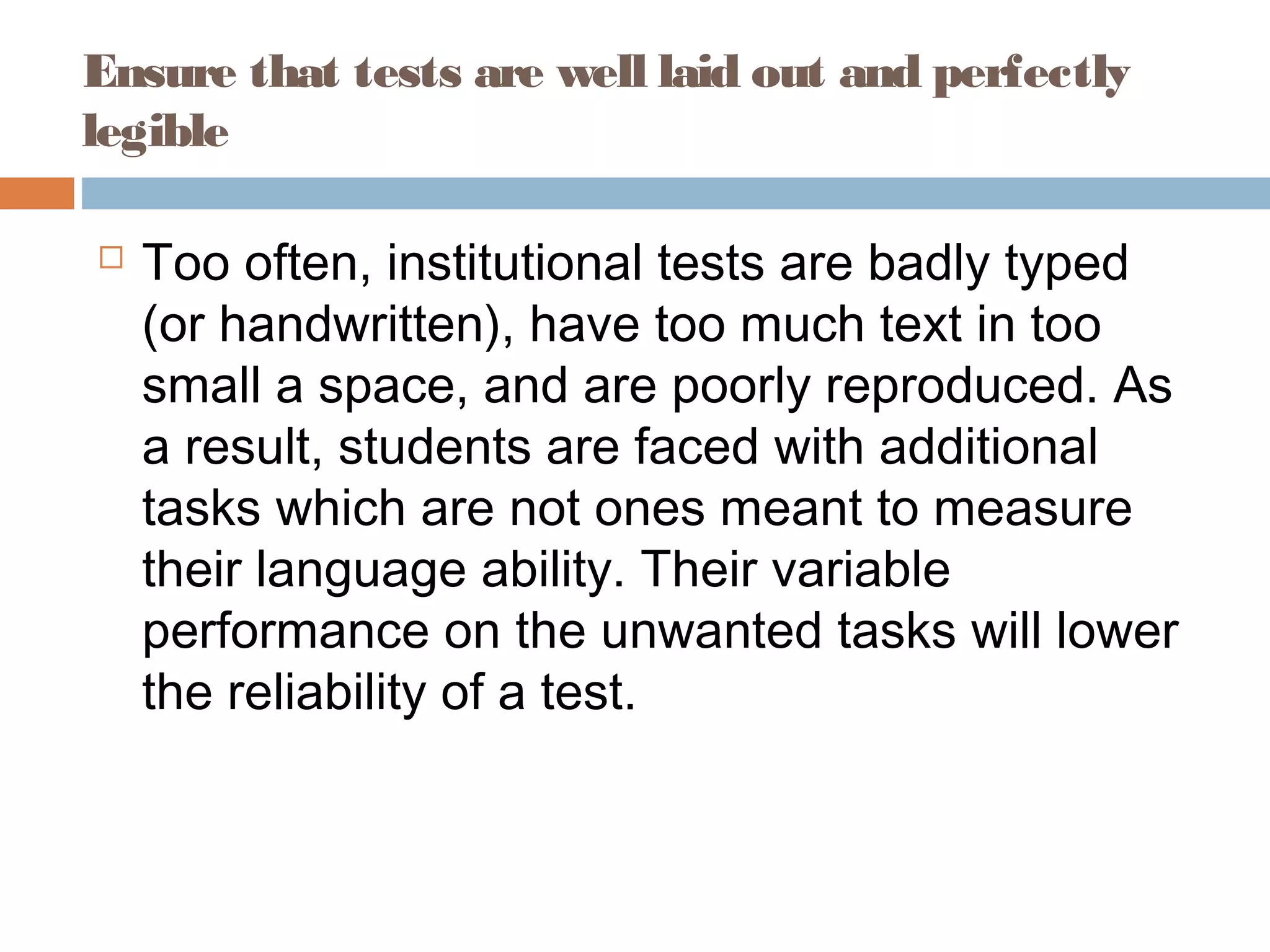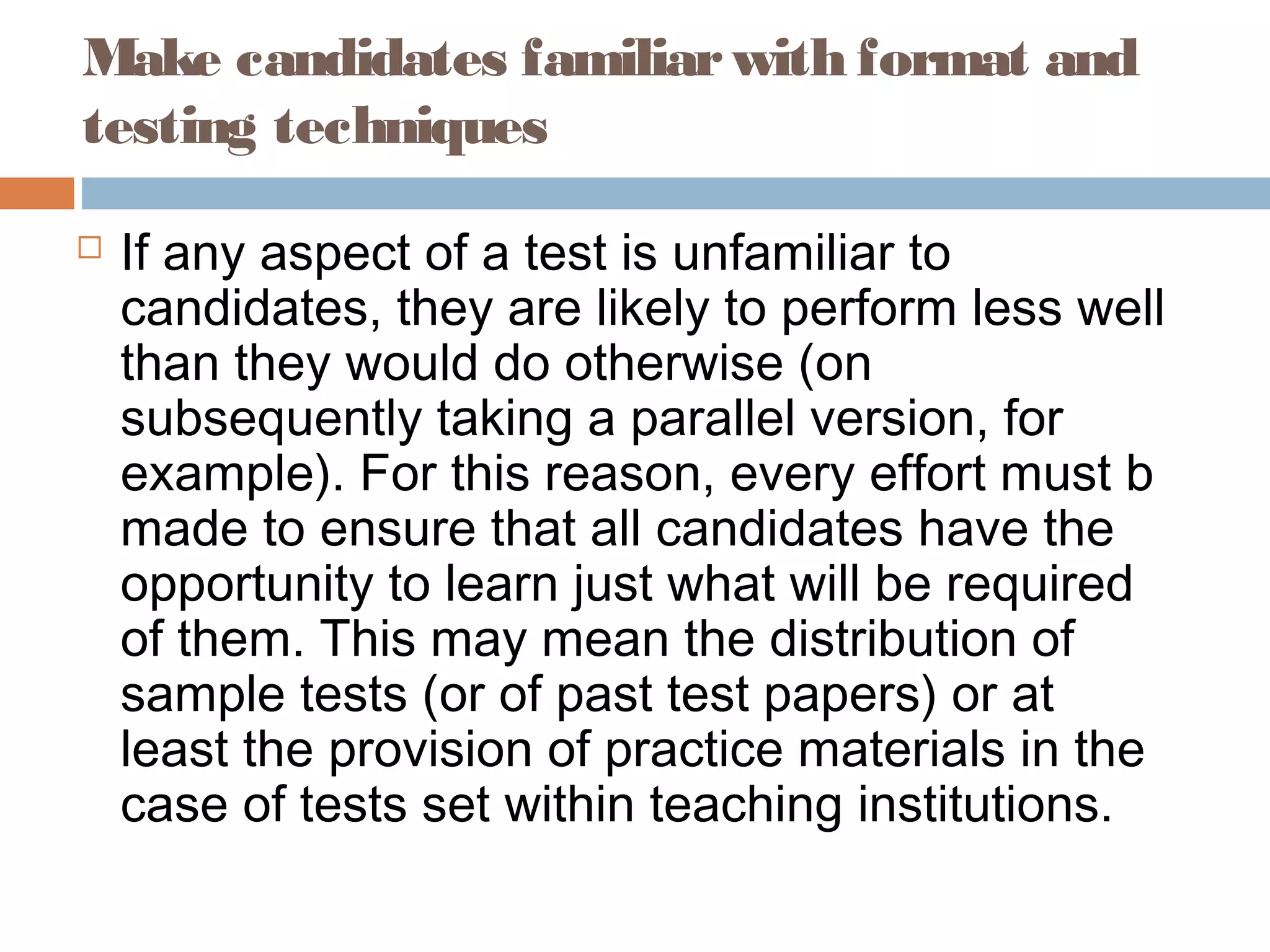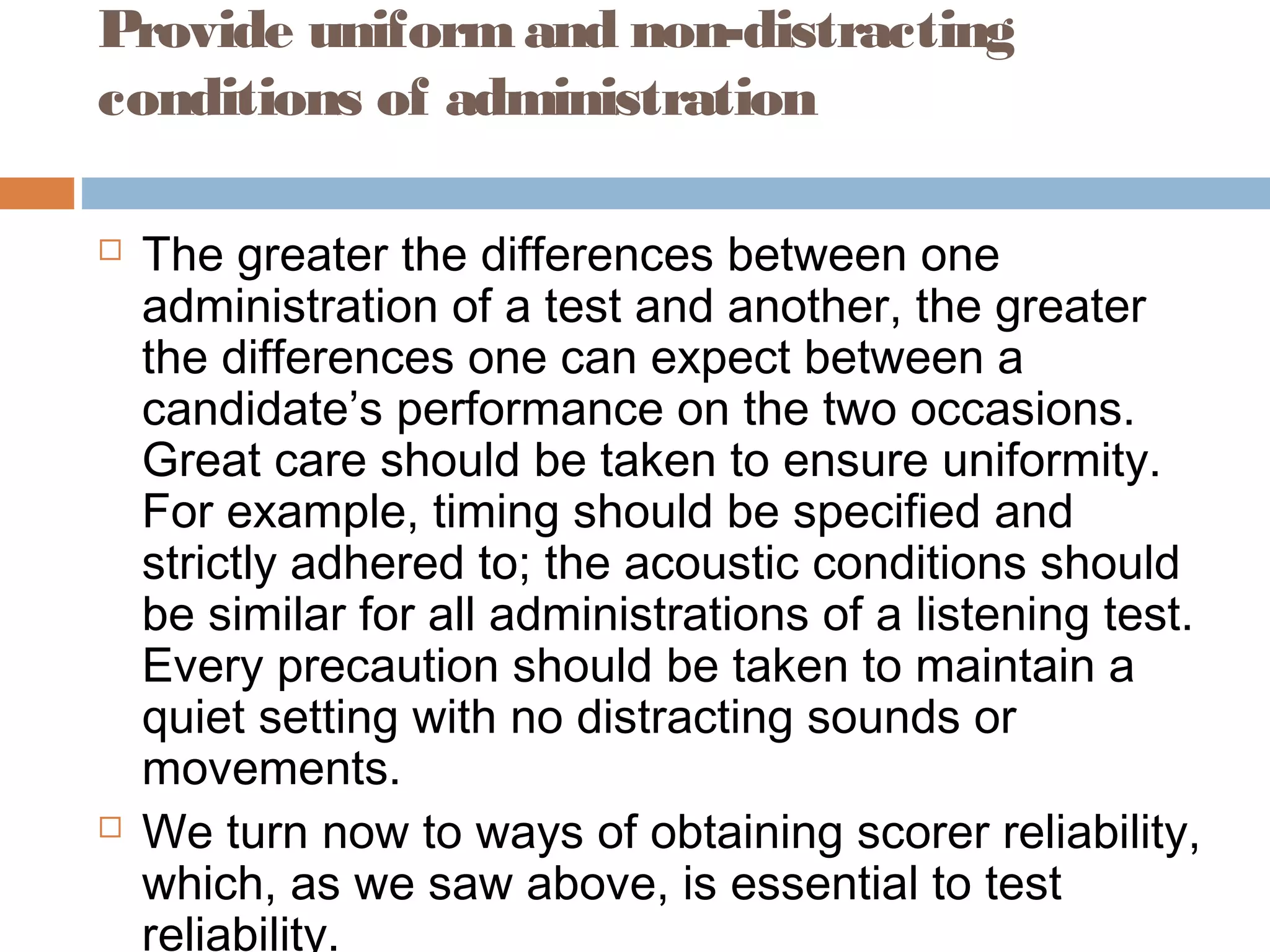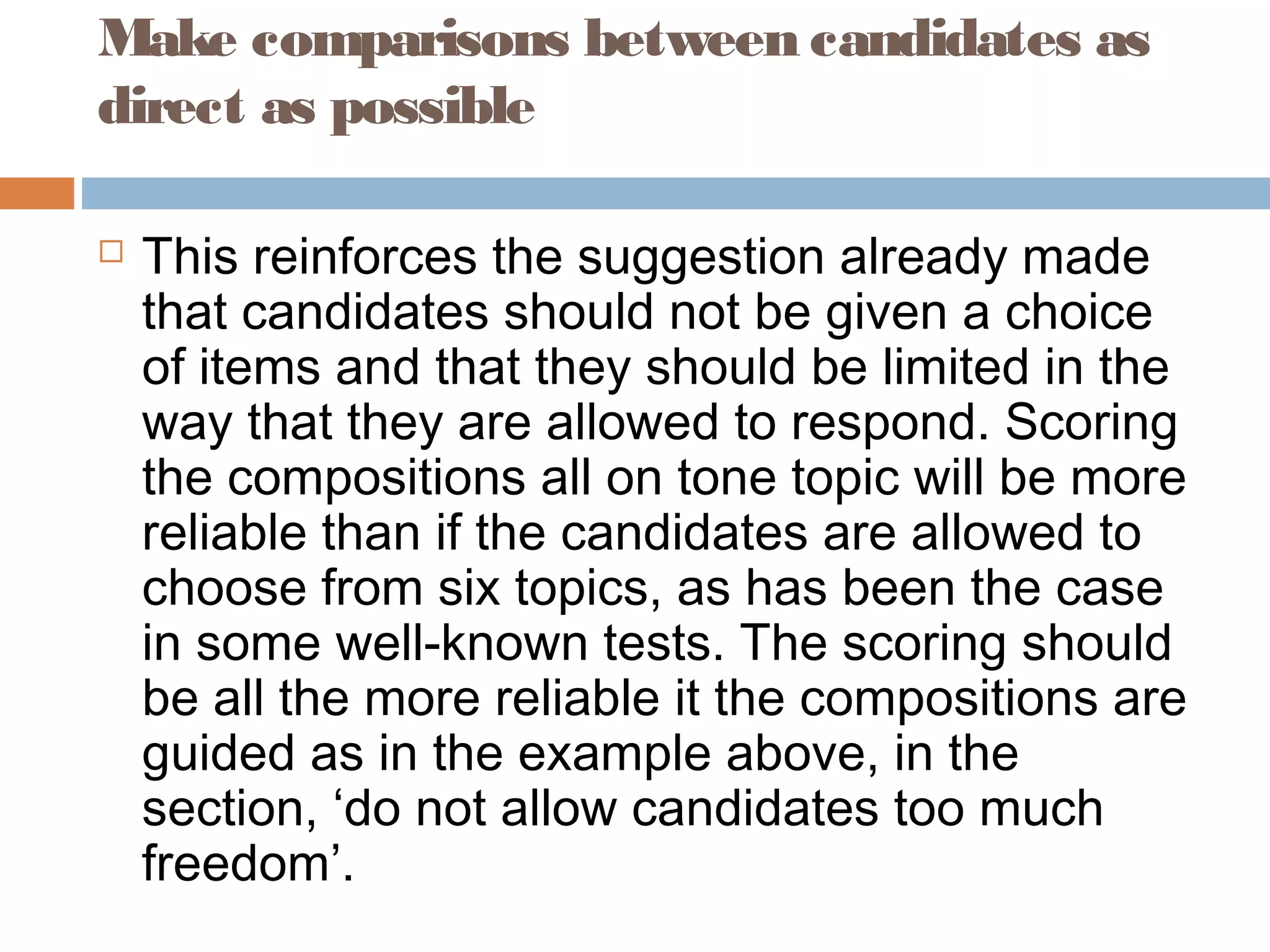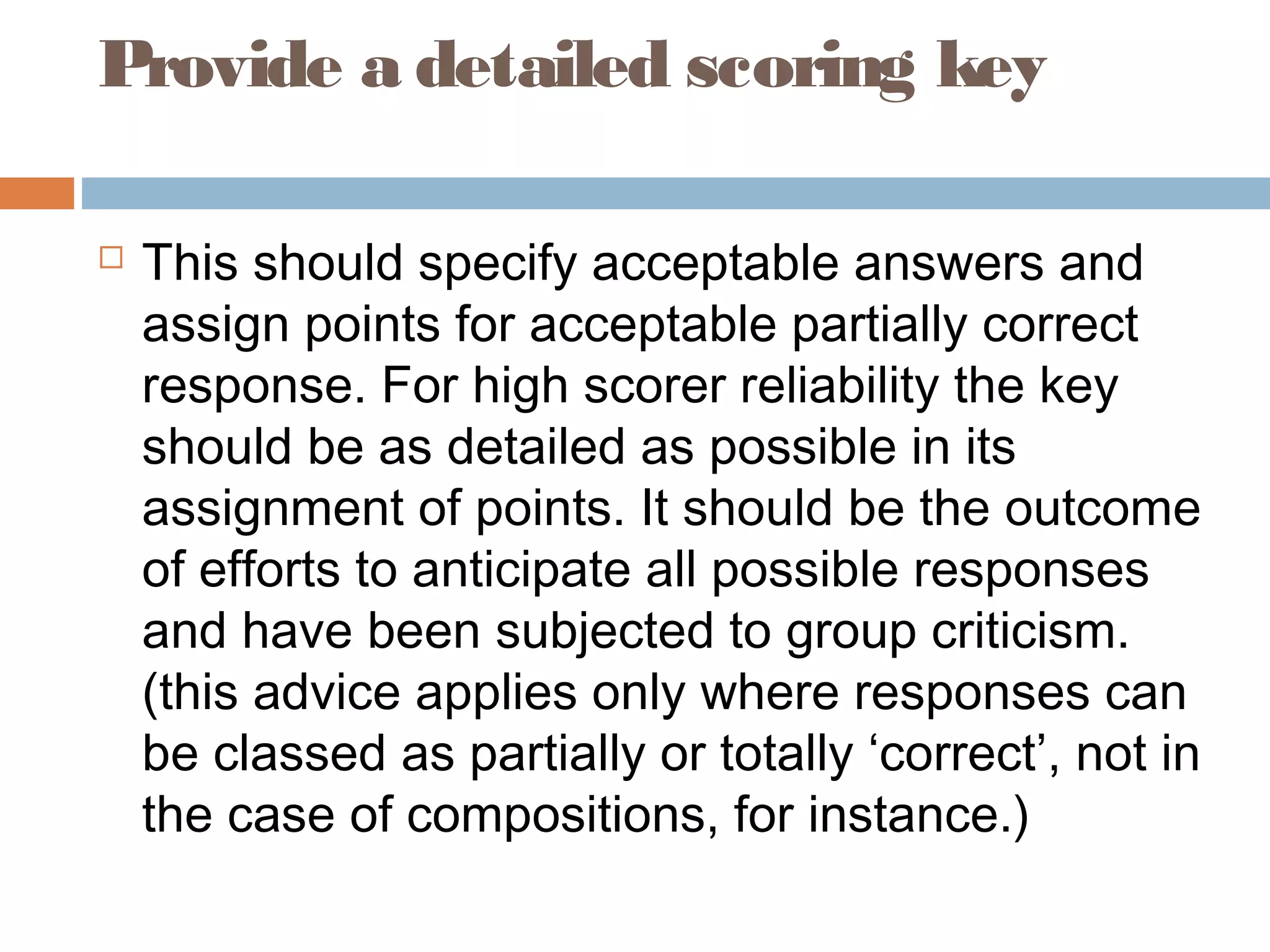This document discusses factors that affect the reliability of tests and how to improve test reliability. It states that human behavior is not perfectly consistent, so test scores may differ depending on when a test is taken. However, tests can be designed and administered in a way that makes scores close to what would be obtained on different occasions. Ways to improve reliability include removing non-discriminating test items, limiting candidate choices and freedom of response, providing clear instructions, ensuring good test layout/legibility, and familiarizing candidates with test formats and techniques. The goal is to construct tests where scores are likely to be similar for a given student across different administrations.
